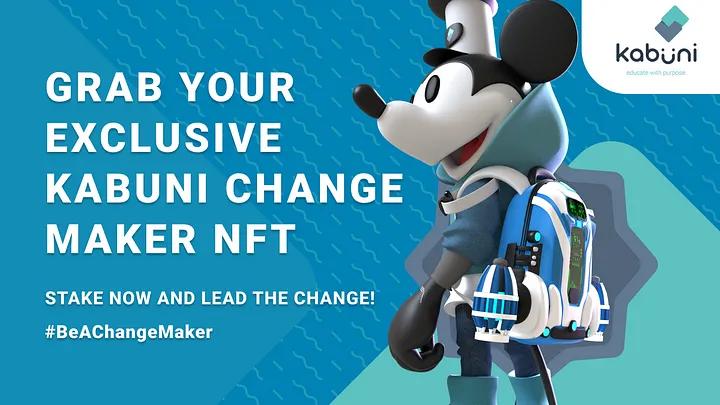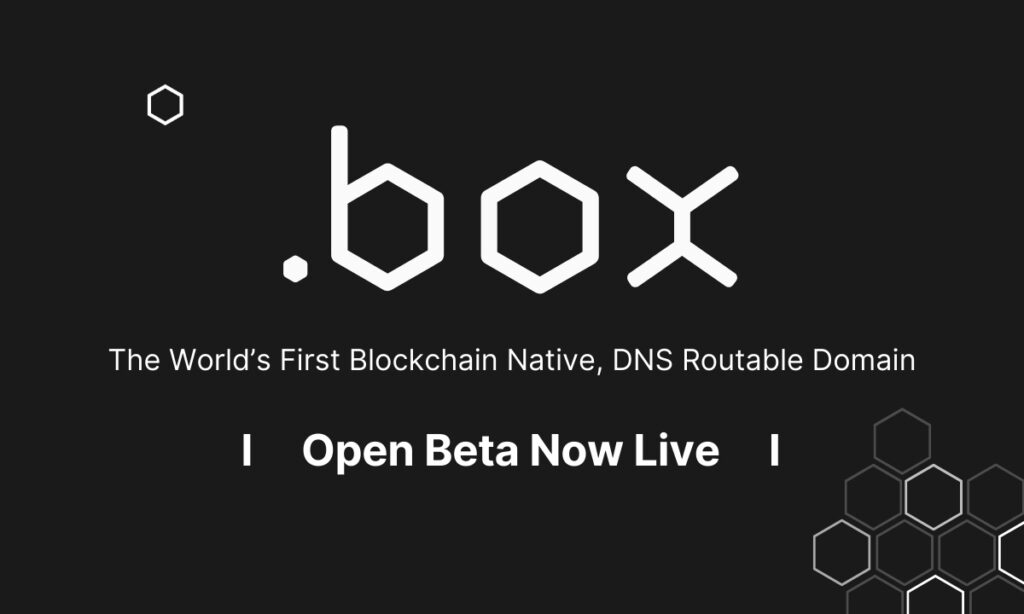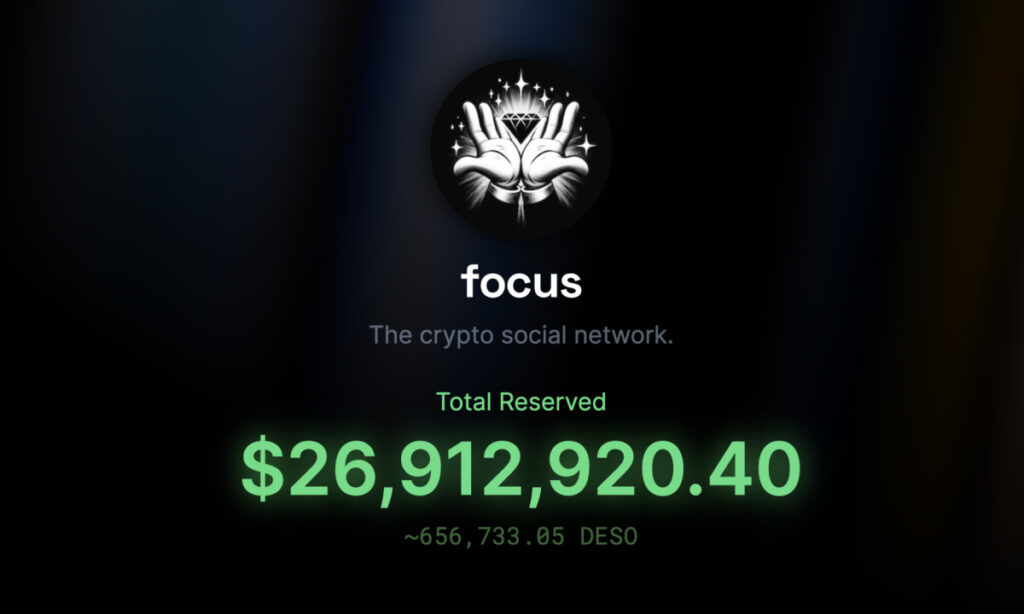The Stonk-o-Tracker played a key role in the rise of AMC’s stock among retail investors in the UK and abroad.
The world of finance has undergone a seismic shift in recent years, with retail investors emerging as formidable players in the stock market. AMC Entertainment Holdings, Inc. (AMC), a well-known movie theater chain, found itself at the center of this financial whirlwind. AMC’s extraordinary ascent to stardom in the stock market, fueled by retail investors and social media, birthed a phenomenon affectionately known as “stonks.” The Stonk-O-Tracker, a powerful web-based tool, emerged as a critical companion for AMC enthusiasts, helping them navigate the volatile and unpredictable terrain of the AMC stock.
Unraveling the AMC Phenomenon
To fully appreciate the significance of the Stonk-O-Tracker in the context of AMC, it’s essential to grasp the unique circumstances that propelled AMC to prominence in the stock market. Early in 2021, AMC faced dire straits due to the COVID-19 pandemic. The movie theater industry was severely affected as people chose to stay home, resulting in significant financial struggles for AMC and a historic low in its stock price.
However, AMC’s fortunes took a remarkable turn as retail investors from online communities, most notably Reddit’s WallStreetBets subreddit, united to orchestrate a short squeeze. A short squeeze occurs when investors with short positions in a stock (betting that its price will fall) are forced to cover their positions by buying the stock, causing the stock price to surge. This coordinated effort led to an unprecedented rally in AMC’s stock price, defying all expectations.
READ: 2024 Review: Why is Revolut Bad?
The Rise of the Stonk-O-Tracker
As AMC’s stock price soared to dizzying heights, keeping pace with these rapid fluctuations became an increasingly daunting task for retail investors. It was here that the Stonk-O-Tracker emerged as a beacon of hope, a web-based platform that swiftly gained popularity among the AMC faithful. This innovative tool was engineered to offer real-time data, analysis, and invaluable insights into AMC’s stock performance, making it an indispensable resource for anyone navigating the turbulent waters of the AMC revolution.
Key Features of Stonk-O-Tracker
1. Real-Time Stock Price Tracking
One of the foundational features of Stonk-O-Tracker is its ability to provide real-time updates on AMC’s stock price. This feature enabled investors to stay well-informed, empowering them to make timely decisions regarding buying, selling, or holding their AMC shares.
2. Interactive Charts
Stonk-O-Tracker included interactive charts that showcased the stock’s historical performance. These charts allowed users, particularly technical analysts, to identify patterns and trends over time. This feature proved invaluable for predicting future price movements.
3. Social Media Sentiment Analysis
Recognizing the pivotal role of social media in shaping AMC’s stock price, Stonk-O-Tracker incorporated sentiment analysis tools. It aggregated data from various social platforms like Twitter and Reddit, providing users with a gauge of the prevailing sentiment surrounding AMC. This feature allowed investors to gauge the market sentiment and make more informed decisions.
4. Volatility Alerts
During the peak of the AMC craze, the stock was notorious for its extreme volatility. Stonk-O-Tracker equipped users with volatility alerts, notifying them of significant price swings or spikes in trading volume. These alerts helped investors stay ahead of the curve and respond to market shifts promptly.
5. Community Forums
To foster a sense of community among AMC enthusiasts, Stonk-O-Tracker integrated discussion forums where users could share insights, experiences, and strategies. These forums evolved into a central hub for AMC investors to connect, exchange information, and provide support to one another.
The Impact and Influence of Stonk-O-Tracker
The Stonk-O-Tracker played a pivotal role in shaping the broader narrative of the AMC phenomenon. Here are some of the ways in which it exerted its influence:
1. Empowering Retail Investors
Stonk-O-Tracker empowered retail investors by providing them with real-time data and analysis. This level of information equated to making informed decisions, thereby leveling the playing field between individual investors and institutional giants.
2. Building a Thriving Community
The community forums within Stonk-O-Tracker provided a haven for like-minded individuals to connect and collaborate. It cultivated a strong sense of camaraderie among AMC enthusiasts and facilitated the exchange of valuable information and strategies. The tool served as more than just a tracker; it was the epicenter of a growing community.
3. Attracting Media Attention
Stonk-O-Tracker gained widespread media attention as it became synonymous with the AMC revolution. It was featured in numerous news articles and television segments, further amplifying the profile of AMC and its ever-growing retail investor following. The platform became a symbol of the changing landscape of finance.
4. Challenging Traditional Market Norms
The AMC craze, accompanied by tools like Stonk-O-Tracker, raised questions about traditional market norms. It showcased the incredible power of collective action and the influence of social media in shaping stock prices. This phenomenon challenged the status quo and encouraged a reevaluation of established market dynamics.
Challenges and Controversies
Despite its undeniable popularity and the positive impact it had on many retail investors, the Stonk-O-Tracker was not without its fair share of challenges and controversies. Some critics argued that the platform contributed to market manipulation and encouraged reckless trading. Others questioned the accuracy of sentiment analysis, highlighting the potential for misinformation to spread within the community. Additionally, the volatile nature of AMC’s stock raised concerns about the long-term sustainability of the movement.
The Future of Stonk-O-Tracker and AMC
As of my last knowledge update in January 2022, the future of both AMC and the Stonk-O-Tracker remained uncertain. AMC’s stock price had experienced significant fluctuations, and the company was grappling with the ongoing challenges posed by the pandemic. However, the enduring popularity of the Stonk-O-Tracker demonstrated the persistent interest in AMC among retail investors.
In conclusion, the Stonk-O-Tracker emerged as a critical tool during the AMC revolution, providing real-time data, analysis, and a sense of community for retail investors. Its impact on the broader financial landscape and the ongoing evolution of the AMC story remained a subject of great interest and debate. The AMC phenomenon, coupled with tools like Stonk-O-Tracker, underscored the changing dynamics of the stock market and the growing influence of retail investors in shaping the financial world. The future of both AMC and the Stonk-O-Tracker will undoubtedly continue to captivate the attention of investors and enthusiasts alike.
Toronto, Ontario, January 18th, 2024, Chainwire
.box is bridging Web3 and Web2
Breaking new ground in the domain name industry, My.box Inc. announces the upcoming launch of its Public Beta on January 18th, 2024 at 12:00 PM ET. This kicks off public availability of the first ever domain name system supported natively by browsers, email, and wallets.
The future of digital identity
.box domains offer secure and seamless identity on Web3 and Web2. The holder of ‘example.box’ is empowered with decentralized ownership and access to DNS record management, ENS integration, payments, Web3 authentication, Web3 messaging, websites, and email. Founder of .box, Josh Brandley states, “There are many great things happening at the intersection of Web3, decentralized identity, and domain names – we are the first to tie it all together with a powerful, easy to use product”.
.box solves the major problem with blockchain domains
.box sets a new standard in the world of blockchain-based top-level domains. While other new blockchain domain systems generate excitement, they ultimately fall short because they do not work with traditional browsers and email services. In contrast, .box is ICANN-accredited, recognized by the global Domain Name System (DNS), and supported by the Ethereum Name Service (ENS). Both DNS and ENS have established substantial network effects, solidifying their positions as core infrastructure. .box is pioneering an approach that natively integrates the features of both systems, thus delivering a better experience for users.
The team behind .box
The .box TLD is owned and operated by Intercap Registry, an ICANN Accredited Registry Operator. Intercap has dedicated over a decade to the development of .box. Core partners include 3DNS and ENS Labs, whose leaders share the vision of bringing the benefits of Web3 to the domain industry. Nick Johnson, Founder of ENS, states: “We have always had a deep respect for the DNS and are very excited to witness this unique .box implementation that supports seamless interoperability between the two systems”. Paul Gauvreau, CEO of 3DNS adds, “Bringing real world domain assets onchain improves almost every use case there is – we anticipate that this product will be widely adopted by Web3 enthusiasts and newcomers alike.”
Launch pricing
During launch, .box domains will run through a premium pricing phase, ensuring fair access for everyone. Prices start at $7,680 USDC and then decay exponentially for 6 days until stopping at a fixed rate of $120 USDC. All domains will renew at $120 USDC per year. Domains are minted and managed using the dApp hosted at my.box. Payment is made with ETH or USDC.
Join the .box community
- Secure your .box domain now at https://my.box
- Follow .box at https://x.com/boxdomains
- Join the .box Discord server to:
- Learn how to buy a .box and take control of your decentralized identity.
- Qualify for your referral link to earn $18 for each successful referral.
- Receive support, updates, and connect with the team.
For More Information:
Visit our website at www.my.box or contact Omar Hamed, omar@intercap.com

Contact
Community Manager
Omar
My.box
contact@omar.box
Los Angeles, California, January 17th, 2024, Chainwire
Key Takeaways
- Focus, the revolutionary new decentralized SocialFi app, raised $20 million in less than 24 hours
- Focus rivals subscription platforms like OnlyFans and Patreon, a multi-billion-dollar industry
- The Social Airdrop offers users the chance to earn upwards of $100,000 in $FOCUS tokens
Focus is a brand new SocialFi app from DeSo, the team that raised $200M from Coinbase, Sequoia, a16z, Social Capital, and other top funds. It aims to disrupt the trillion-dollar social media market and creator economy by introducing groundbreaking features rivaling X, Onlyfans, and Patreon.
The TAM for this market is significant, with OnlyFans processing roughly $8 Billion in 2023 and charging 20% per transaction. These high fees significantly reduce creator profits, highlighting the need for a more equitable solution.
Focus combines the best of Onlyfans, Patreon, X, and other billion-dollar social platforms into one app. It’s built on the DeSo blockchain and powered by permissionless crypto-native monetization features that are not possible in web2.
Under the leadership of crypto-veteran Nader Al-Naji, Focus is fully decentralized, with no corporate entity behind it. Just coins and code:
“Decentralized social media is facing the same skepticism Bitcoin did at its inception. Critics believe it can’t challenge major players, won’t scale, and faces a ban if it does. Ask yourself: do you want to be on the side that’s short-sighted and left behind or embrace optimism and innovation? This is your chance to be part of a monumental technological shift.” – Nader Al-Naji, Founder of DeSo
Focus allows new ways for users to make money with anonymous crypto-enabled monetization mechanics that include paid reposts (decentralized ads), paid messages, unlockable content, subscriptions, and Creator Coins, allowing users to invest directly in other creators’ revenue streams.
Thanks to the DeSo blockchain and its Revolution Proof of Stake system, Focus users can transact in a variety of cryptocurrencies, including USDC, Bitcoin, Ethereum, Solana, DeSo, and Focus tokens, all for under 1/10,000th of a cent per transaction, including for cross-chain assets.
DeSo also supports the storage of content directly on-chain for 1/10,000th of a cent per post, which is much less than Solana at ~$1 per post or Ethereum at ~$100+ per post.
This means that Focus can pioneer innovative monetization and content mechanics that are not possible with older high-fee blockchains or slower and heavily censored fiat payment rails.
DeSo Founder Nader Al-Naji continues: “From the beginning, our strategy was clear: lay down a scalable, decentralized groundwork, then roll out applications that truly showcase the unparalleled advantages and power of DeSo.”
Focus allows users to reserve tokens akin to staking, with the flexibility to choose any supported currency via HeroSwap, including BTC, ETH, SOL, USDC, and DESO. Early adopters who reserve tokens during the first week (January 11th to January 18th) will receive a 100% bonus in $FOCUS tokens.
Unlike traditional social networks, Focus democratizes distribution by distributing 100% of all fees directly to the holders of $FOCUS tokens. This contradicts the business model users see with social platforms today, where a small group of venture capitalists and shareholders capture all the value.
To further incentivize user participation, Focus is introducing a viral airdrop model, The Social Airdrop, which rewards users based on their influence on external social networks, distributing $FOCUS tokens commensurate with their reach.
This new airdrop model means someone with a thousand views per post would get a joining bonus of about $100 in $FOCUS tokens. In contrast, someone with millions of views per post, like Elon Musk, would get a bonus of upwards of $100,000 in $FOCUS tokens.
The Social Airdrop also includes a referral program allowing users to refer others to the platform and in return receive 10% of the referee’s joining bonus and 5% of all revenues the referee generates on the platform.
FOCUS plans to support X, Instagram, YouTube, TikTok, Twitch, select email domains, DeSo, and OnlyFans at launch.
To reserve tokens and earn a 100% bonus in $FOCUS, prospective users should visit Focus.xyz and reserve their funds before 11:11 am EST on January 18th. The bonus will drop every week until the app goes live.
About Deso
DeSo is the first and only censorship-resistant Layer-1 blockchain purpose-built to power storage-heavy apps and scale decentralized social networks for mass adoption. Their mission is to decentralize social media like Bitcoin and Ethereum are decentralizing finance. DeSo has gained significant adoption and boasts 2.6M users (wallets) and 93M transactions. With Focus, DeSo aims to usher in a new age in crypto led by cutting-edge consumer apps that scale to billions of users.
Contact
Ed Moss
Ed@deso.org
London, United Kingdom, January 17th, 2024, Chainwire
Kabuni’s Steamboat Willie-inspired non-fungible tokens (NFTs) go beyond digital assets, they are integral to Kabuni’s mission of unlocking human potential through technology and driving positive change.
Holders of these NFTs gain an exclusive path to the chance of earning Kabuni COIN (KBC), embodying the spirit of innovation, these NFTs also grant holders voting rights to influence Kabuni’s future direction, symbolizing the team commitment to integrating community participation and technological advancement. The Kabuni ChangeMaker NFT transcends traditional digital asset boundaries, seamlessly merging value from the digital realm to the physical and back again, as we grow and Stake a Future across the globe.
What is “Stake a Future”?
Kabuni is redefining crowdfunding in the Web3 era with an innovative approach that concentrates on projects with significant impacts in key sectors. The Kabuni model uniquely intertwines contribution with reward, supporting promising ventures while offering tangible benefits to those who invest in these impactful projects.
A tribute to innovation: The Steamboat Willie-Inspired ChangeMaker NFT
“Our journey began six years ago with a vision to unlock the design potential in every human being and elevate life. The ChangeMaker NFT program draws inspiration from Steamboat Willie, from humble roots to global icon changing the world,” states Nimesh Patel, CEO of Kabuni.
The launch today signifies a pivotal evolution in digital asset innovation and marks Kabuni’s expansion beyond revolutionising K-12 education sector into venture building, cryptocurrency exchange, and finance applications. These new ventures are in alignment with Kabuni’s mission, demonstrating the company’s commitment to broadening its impact across various sectors.
Exclusive benefits for ChangeMaker NFT holders
- Monthly Draws: Chance to win $1000 in KBC every month for a year.
- Governance Participation: As Kabuni grows, NFT holders can vote on the company’s direction, playing a pivotal role in its development.
- Exclusive Access and Opportunities: Owning an NFT opens doors to unique experiences and advantages within the Kabuni ecosystem.
- Stake A Future: Holders will be part of Kabuni’s “Stake A Future” initiatives from the outset, experiencing these ventures before others.
- A Journey of Growth: The holder’s progression from Affiliate to Ambassador within Kabuni reflects the transformative journey akin to that of Steamboat Willie, symbolizing growth and evolution.
Joining the ChangeMaker NFT Movement: The Process of Minting Event Tickets
- Stake and Save: Interested parties should visit Coinstore and stake KBC and participate in the inaugural “Stake A Future” program by staking KBC tokens.
- Mint NFT Ticket: After completing the required quests, users need to add their Coinstore UID to the Kabuni Airlyft campaign. This will allow them to mint their unique Backpack NFT ticket.
- Engage with the Community: Users can connect with Kabuni on Discord, Twitter, and other platforms for the latest updates and community interaction.
“Transforming asset exchange and redefining finance, we’re creating a transparent, ethical, and accessible ecosystem. We are pleased to be part of reshaping the future of digital finance with Kabuni.” says Shawn Koh, Regional Manager of Coinstore.
Users can join Kabuni on this exhilarating journey as it strides towards a future where technology and humanity unite for the greater good.
In anticipation of Kabuni’s ChangeMaker NFT launch on February 14th, users today have the opportunity to mint one of the 10,000 available tickets. These tickets not only secure a place for users at the launch but also determine the price they will pay for the ChangeMaker NFT – the smaller the ticket number, the less the user pays.
About Kabuni
At Kabuni, our focus is on cultivating four key pillars: education, venture building, cryptocurrency exchange, and finance applications. Each of these sectors plays a crucial role in delivering our ‘why’ — to unlock the design potential in every human being and elevate life. Our approach is to create a scalable framework that balances conscientious profit with the elevation of people and the betterment of our planet. This vision is driven by a unique blend of emerging technology and a commitment to safety by design, ensuring that as we grow, we do so responsibly and with a positive impact on the world.
Contact
CEO
Nimesh Patel
Kabuni
nimesh@kabuni.com
Crypto Intelligence and its network of other crypto, blockchain and AI news platforms and blogs is accepting guest posts.
In this article, we explain how you can contribute crypto, blockchain and AI guest posts to our sites, and outline our submission requirements.
Write a Crypto, Blockchain or AI Guest Post
If you’re interested in contributing guest posts about the world of cryptocurrencies, blockchain and artificial intelligence, we want to hear from you. You can get in touch with us by sending an email to sales@cryptointelligence.co.uk and someone from our team will revert back to you within 24-48 hours.
In your outreach email, it’s advisable to outline what sort of guest post you would like to contribute, and provide an overview of its contents.
Submission Guidelines
1. Original and High-Quality Content
– All submissions must be original and written exclusively for our platform. Plagiarism and duplicate content will not be accepted.
– We value well-researched and high-quality articles. Ensure your post is accurate, well-structured, and free from grammatical errors. Proofread and edit your work before submission.
2. Relevance and Freshness
– Topics should be relevant to the fields of cryptocurrency, blockchain, or AI. We prioritize articles that discuss current trends, emerging technologies, or provide valuable insights to our readers.
– Stay updated with the latest developments in your chosen niche. Fresh and timely content is more likely to engage our audience.
3. Authoritative Sources
– When including statistics, data, or referencing specific studies, make sure to cite reliable and authoritative sources. Proper attribution enhances the credibility of your article.
4. Length and Depth
– Aim for articles with a minimum of 500 words to provide in-depth information. Longer articles may be more appropriate for complex topics.
– If you have a comprehensive guide or a deep analysis to share, consider breaking it down into a series of articles for better readability.
5. Engaging and Accessible Writing
– Write in a clear and concise manner. Avoid overly technical jargon, but don’t oversimplify complex concepts either. Strive for a balance that makes your content accessible to a broad audience.
– Use subheadings, bullet points, and visuals (when appropriate) to break up text and improve readability.
6. Unique Perspective
– We appreciate articles that offer unique perspectives, case studies, personal experiences, or thought-provoking insights. Stand out by providing a fresh take on familiar topics.
7. Non-Promotional
– Guest posts should not serve as advertisements or promotional content for specific products, services, or companies. Any references to such should be relevant to the topic and kept to a minimum.
– Avoid overly promotional language and ensure that your content adds educational or informational value.
8. Format and Submission
– Submissions should be in a plain text format, preferably in Markdown or Google Docs. Include any relevant images or diagrams as separate files, and provide proper attribution if necessary.
– Send your guest post as an email attachment to the provided submission address, with “Guest Post Submission” in the subject line. Include a brief author bio, contact information, and links to your social profiles.
9. Editing and Approval Process
– Our editorial team will review your submission for quality, relevance, and adherence to our guidelines.
– You may be requested to make revisions if necessary, and your article may go through multiple rounds of editing.
10. Rights and Attribution
– By submitting a guest post, you grant us the non-exclusive right to publish and promote your content on our platform. You will be credited as the author of the post.
– We may share your post on our social media channels and newsletter to maximize its reach.
11. Respect Comments and Engagement
– Engage with our audience by responding to comments on your guest post. Encourage discussion and provide further insights when appropriate.
Following these guidelines will increase the chances of your guest post being accepted and published on our platform. We look forward to receiving your valuable contributions in the fields of cryptocurrency, blockchain, and AI, and helping you share your knowledge with our readers.
Read the Latest Crypto News Today
Investors might have a tough time during a bear market, but these downward cycles are often seen as a great opportunity for innovators to double down and refine their ideas. This is especially apparent in the Web3 industry, where the long and drawn out crypto winter that began at the tail end of 2021 has weeded out many of its flawed projects. Those that are left standing are now primed to usher in some exciting new use cases as the crypto industry looks set for a strong rebound heading into 2024.
As optimism builds over the prospect of a new bull market for crypto, now seems like a great time to take stock of some of Web3’s most exciting new developments.
Distributed Validator Technology
DVT is gaining momentum as a superior approach to blockchain validator security due to the way key management and signing responsibilities are split across multiple parties, increasing the resilience of the network.
With DVT, the private keys used to secure a validator are shared across multiple clusters of computers. This means it becomes exponentially more difficult for hackers to gain access to that private key, as they would have to attack numerous machines separately. Another benefit is that some nodes can go offline, without the validator being affected, as the key signing can be performed by a subset of machines within the larger cluster.
DVT therefore delivers three main benefits to Proof-of-Stake blockchains – it increases security, it means there’s no single point of failure for a validator, and it accelerates decentralization by making it simple to establish numerous independently operated validators.
One of the leading lights in the DVT space is SSV.Network, which provides the significant advantage of allowing validators to remain anonymous, helping to reduce hacking and coercion attempts. SSV makes it much more difficult for cyberattackers to target a specific validator, and simultaneously makes validation much more accessible as users can participate in a node with minimal financial resources.
SSV is tipped to gain substantial momentum in 2024 following the launch of its permissionless mainnet in December. With its launch, anyone can participate in Ethereum’s network by staking a minimal amount of ETH, validating transactions to earn a share of the rewards on offer. The project has gotten off to a great start, with more than $160 million worth of ETH being staked by over 2,200 validators across 74 SSV nodes.
Zero-Knowledge Proofs
Although ZK-Proofs is a relatively old technology within the Web3 sphere, it’s set to make a big splash in 2024 as it reaches a new level of maturity.
The basic idea of ZK-proofs is that they allow one party in a transaction to prove to a second party that it has specific knowledge regarding the details of that transaction, without revealing any specifics. The technology has profound implications for blockchain as it addresses headaches around the opposing needs for transparency and privacy. With ZK-proofs, it becomes possible for crypto transactions to be verified without anyone knowing the transaction details. This ensures full transaction privacy, while preventing anyone from cheating the system.
ZK-proofs were first popularized by the privacy-focused cryptocurrency ZCash, but the technology is now being used for additional use cases, such as verifiable off-chain computing.
With ZK-proofs we can build a verifiable web that enables users to make informed decisions, because they can verify exactly what the systems they interact with are doing, promoting greater trust. In a blog post, ChainLink cites three main benefits to the verifiable web. First, users will know what they’re getting into because they can proactively verify everything about a system and confirm it won’t change. Second, they’ll be able to understand what is happening within any system by using ZK-proofs to verify any events or data. Third, users can proactively decide if and when they want to leave a system, as the verifiable web clearly defines how to do so.
Several projects are working hard to make the verifiable web a reality. They include Space and Time, a decentralized data warehouse startup that uses ZK-proofs to verify queries against both on- and off-chain data. Space and Time has developed a technology called Proof-of-SQL, which makes it possible to cryptographically secure database queries. In turn, this means smart contracts now have a way to verify off-chain data, opening the door to more sophisticated decentralized applications that can respond to real-world events. Space and Time has notably integrated its technology with Google Cloud’s BigQuery to private queries to off-chain data stored in the cloud.
A second major player driving greater adoption of ZK-proofs is Cronos. In December, Cronos announced the launch of its third major network in testnet – a Layer-2 known as the Cronos zkEVM chain – which is built using Matter Labs’ tools for spinning up so-called “hyperchains” that sit above existing networks.
The Cronos zkEVM chain is expected to launch its mainnet in the second quarter of 2024, and brings benefits such as its low hardware requirements and lower transaction fees. By using ZK-proofs, it also facilitates native account abstraction, where transaction fees can be paid using alternative cryptocurrencies.
Fully Homomorphic Encryption
Even as ZK-proofs gain momentum, others in the blockchain industry are working on what they believe is a superior alternative to facilitate private transactions. Fully Homomorphic Encryption, known as FHE, makes it possible to perform computations on data that remains encrypted in ciphertext format, ensuring it remains protected at all times. This is important, because in traditional computing it is necessary to unencrypt data before it can be used by any application.
FHE provides significant benefits, for example by allowing untrusted networks to access data that remains fully encrypted, preventing any misuse.
One of the biggest proponents of FHE is Google, which offers an extensive toolkit for developers looking to build applications that leverage the technology. In the crypto realm, Fhenix is one of the leading players in FHE, building an EVM-compatible blockchain that’s said to be the first network of its kind to implement the technology.
Fhenix argues that FHE can provide big benefits to a blockchain industry that’s known for its transparency due to the public nature of decentralized networks. The startup, which raised $7 million in funding in September, announced the launch of its testnet earlier in the year, followed by a private devnet that launched in June.
Because Fhenix’s FHE blockchain is EVM-compatible, the startup says it can improve the utility of Ethereum-based dApps, supporting capabilities such as private voting for DAOs, private real-world asset tokenization, blind auctions, on-chain identification and more.
Super Apps
The concept of the Super App has its roots in the world of Web2. Super Apps are basically just one application that offers users multiple, diversified services for everyday life. They’re usually built atop of a single function, such as a chat or financial payments platform, which integrates with various other services and makes them easier for their users to access.
Super Apps first emerged in China, with the likes of WeChat and Alibaba amassing millions of users on their respective chat and e-commerce platforms, before expanding to include other offerings. These days, WeChat is far more than just a chat app, as it also offers social media, hotel bookings, transportation services such as taxi bookings, e-commerce marketplaces, video games, financial services, online dating and everything else you can imagine.
Kresus is now looking to bring the concept of the Super App into Web3 with the launch of a crypto wallet that doubles as a portal to the world of decentralized applications. Besides just being a wallet, Kresus offers functionality such as minting and transferring NFTs, numerous on- and off-ramps to fiat, access to DeFi protocols and more.
One of the best things about Kresus that’s likely to help with its growth is its simplicity, which overcomes one of the major hassles in crypto. Whereas other non-custodial wallets require users to carefully store their seed phrase to ensure they can access their digital assets if they lose their wallet, Kresus is completely idiot-proof. It’s simple to set up a wallet, and no seed phrase is created. Instead, it employs traditional account recovery techniques such as email or SMS to ensure users can always access their wallets, even if they forget their password.
Kresus also gives each user a free Web3 identity that’s powered by Unstoppable Domains, which can be used to easily and securely login to any dApp, metaverse or blockchain game in a single click.
Kresus was recently named by FinBold as one of the easiest apps to buy and store crypto with, noted for its ability to provide the same level of security as a hardware wallet, without needing to buy any actual hardware.
Ethereum Virtual Machine
Progress continues to accelerate in the world of EVMs, which are virtual machines that power the smart contracts so critical to the Ethereum network. The EVM is what makes it possible for developers to write smart contracts in the Solidity programming language, and is the key enabler for every autonomous dApp deployed on the network today.
The overwhelming dominance of Ethereum in DeFi and Web3 today means that many other networks are now looking to create their own EVMs to tap into its ecosystem. One of the most prominent examples is the EOS EVM, which was launched in 2022 and has been the focus of much innovation ever since. Although Ethereum has the biggest ecosystem of dApps by far, many developers believe that EOS is a superior network, with faster transaction processing times and lower fees just some of the major benefits.
The EOS EVM effectively bridges the gap between the two ecosystems, providing a way for developers to deploy Solidity-based smart contacts on the EOS network, where they can benefit from its superior performance. It allows developers to use Ethereum’s battle-tested code, libraries, SDKs and other tooling to build dApps that can run on EOS.
With the latest update to the EOS EVM in December, it gained support for WebSocket, which is a key tool for building more sophisticated dApps that rely on real-time, bidirectional communication. With WebSocket, dApp developers can establish two-way and real-time communication between their apps and a remote server, with minimal latency. It improves on the older HTTP communication standard, which is unidirectional, meaning that the client can only send requests, and the server can only respond.
By using WebSocket instead, dApps can maintain a two-way connection that facilitates a continuous exchange of data. This paves the way for instantaneous updates for Web3 chat dApps, messaging tools, trading platforms, blockchain games, NFT tracking tools, DeFi notifications and more.
Web3 Streaming
The concept of livestreaming is taking on a new life in Web3 thanks to the power of Azarus, a streaming platform that changes the very nature of how content creators and their fans interact.
Azarus sits at the forefront of Web3 streaming, with its innovative wallet feature that layers over the video player to enable direct interactions between streamers and viewers. With Azarus, esports players and other content creators have a simple, seamless way to stream and engage with their viewers, using blockchain tokens to provide incentives that enhance the viewing experience.
The beauty of Azarus’s technology is that it provides gamers and other creators with a new source of revenue together with the ability to reward their most loyal audiences, motivating them to spread the word about their gaming exploits. Its platform also provides a way for creators to encourage viewers to visit off-stream destinations such as e-commerce portals, brand properties and more.
Web3 streaming is looking set to become all the rage following the acquisition of Azarus by Animoca Brands, one of the biggest Web3 game developers. Animoca intends to integrate Azarus’s streaming technology into its own games to provide richer experiences for gamers and fans alike.
Ultimately, Animoca believes that Web3 streaming will lay the groundwork for the creation of a player-owned economy that will give gamers, content creators and streamers full control over their digital property and the ability to monetize their expertise.
Revolut is a popular fintech company in the UK, but it has a number of cons and bad attributes.
Revolut, founded in 2015, has rapidly risen to prominence as a disruptor in the banking and finance industry. Offering a range of innovative financial services, from currency exchange to cryptocurrency trading, Revolut has garnered millions of users worldwide. In this comprehensive review, we’ll delve into the features, advantages, and drawbacks of the Revolut platform, and explore why it has both captivated and disappointed customers.
The Advantages of Revolut
Revolut’s popularity can be attributed to several compelling advantages:
1.1. Cost-Effective Currency Exchange
One of Revolut’s standout features is its competitive currency exchange rates, making it an attractive choice for international travelers and those conducting cross-border transactions. The platform allows users to exchange currencies at the interbank exchange rate, saving them from hefty fees imposed by traditional banks.
1.2. Multi-Currency Wallet
Revolut offers a multi-currency wallet, which allows users to hold, convert, and spend money in various currencies without the need for multiple bank accounts. This feature simplifies international financial management and reduces the risk of exchange rate fluctuations.
1.3. Cryptocurrency Trading
Revolut’s foray into the world of cryptocurrencies is a notable advantage. Users can buy, sell, and hold popular cryptocurrencies like Bitcoin, Ethereum, and Litecoin directly within the app. This accessibility has made cryptocurrencies more approachable to the average consumer.
1.4. High-Quality Mobile App
The intuitive and user-friendly mobile app is a testament to Revolut’s commitment to a seamless customer experience. Users can easily manage their accounts, set up budgeting tools, and make transactions with just a few taps.
1.5. Premium Features
Revolut offers premium subscription tiers with added benefits such as enhanced travel insurance, priority customer support, and access to exclusive card designs. These premium features cater to users seeking more comprehensive financial services.
Why is Revolut Bad?
While Revolut has undoubtedly gained a strong following, it is not without its fair share of criticisms and drawbacks:
2.1. Limited Customer Support
One of the most significant grievances users have with Revolut is its customer support. Many have reported difficulty in reaching a real person for assistance when encountering problems with their accounts. This lack of responsive customer support can be frustrating, especially in urgent situations.
2.2. Account Locking and Frozen Funds
Some users have reported their accounts being temporarily locked or their funds frozen for various reasons, such as security checks or suspected fraudulent activities. While these measures are intended to protect users, the lack of transparency and lengthy resolution times can be distressing.
2.3. Limited Financial Products
Revolut primarily focuses on banking and currency exchange, but it lacks a comprehensive range of financial products compared to traditional banks. This may limit the options available to users looking for services like mortgages, loans, or investment products.
2.4. Currency Conversion Fees for Free Users
While Revolut offers competitive currency exchange rates to its premium users, free users may still incur currency conversion fees on weekends or for certain currencies. This can lead to unexpected costs for those who opt for the basic, non-premium account.
2.5. Cryptocurrency Limitations
Although Revolut allows cryptocurrency trading, users do not have the option to withdraw their crypto holdings to external wallets. This limitation contradicts the ethos of cryptocurrency, which emphasizes ownership and control of digital assets.
The Future of Revolut
Despite its shortcomings, Revolut remains a prominent player in the fintech industry. Its rapid growth and innovative approach have forced traditional banks to reevaluate their services and fees. Revolut’s potential for future improvement lies in addressing its existing issues, such as enhancing customer support and expanding its financial product offerings.
Revolut has already taken steps in the right direction by obtaining a banking license in some regions, which will allow it to provide a broader range of services and better regulatory protection to its users. Additionally, the company is continually updating its app with new features and improvements, indicating its commitment to growth and evolution.
As the financial technology sector continues to evolve, Revolut’s ability to adapt and provide solutions to the evolving needs of its user base will determine its long-term success. If the company can strike a balance between innovation and customer support, it may very well become a significant force in the future of banking.
Summary
Revolut has made substantial waves in the financial industry by offering innovative and cost-effective solutions to a global audience. Its advantages, such as competitive currency exchange rates and cryptocurrency trading, have endeared it to millions of users worldwide. However, it is essential to acknowledge the platform’s shortcomings, including limited customer support, account locking issues, and certain fees for free users.
The future of Revolut holds promise, with the company actively addressing its flaws and expanding its services. As it continues to evolve and adapt to the ever-changing landscape of fintech, Revolut has the potential to redefine the way people manage their finances.
Ultimately, whether Revolut is a suitable choice for you depends on your specific financial needs and priorities. While it offers many advantages, it is crucial to consider its drawbacks and limitations carefully. As with any financial institution, conducting thorough research and due diligence before committing to Revolut is advisable to ensure it aligns with your individual financial goals and preferences.
In this article, we outline the teachers strike dates in the UK and reveal when are the next strikes scheduled to be held.
Members of the National Association of Schoolmasters Union of Women Teachers (NASUWT) have embarked on a work-to-rule action in schools across England, as part of an ongoing dispute with the government regarding pay, excessive workloads, and working hours.
This move comes after the four major teaching unions, including the National Education Union (NEU), the Association of School and College Leaders (ASCL), the National Association of Head Teachers (NAHT), and NASUWT, had initially accepted a government offer of a 6.5% pay increase back in July. Although the other unions agreed to the deal, NASUWT decided to persist in its efforts for improved pay and working conditions.
The NASUWT, a significant player in the educational landscape, had already garnered support for strike action and other work-related protests before the acceptance of the government’s pay offer. In their latest move, the union has called on its members to follow strict working hours and adhere to a work-to-rule approach, effectively limiting their work time and avoiding any additional tasks beyond their contractual obligations. This directive, set to begin on September 18th, could potentially affect staff at approximately 10,000 schools across England.
It’s worth noting that members of NASUWT working in sixth-form colleges have reached an agreement on pay, while teachers in Northern Ireland have also been involved in a work-to-rule action since October 2022. However, the pay dispute has been resolved in Scotland, and the NAHT members in Wales have also settled their grievances.
Parents may wonder about the implications for their children’s education in the event of such actions. The government has stated that schools should remain open whenever possible during teacher strikes. However, teachers are not obligated to declare their intention to strike in advance, and there are no specific regulations regarding when parents should be notified of potential school closures. The decision to close schools ultimately rests with individual headteachers, and some parents may only learn about a closure on the morning of the industrial action once staff availability is determined. Currently, there are no minimum staffing requirements for schools, and headteachers can employ agency staff or volunteers who may not follow the regular curriculum.
Education Secretary Gillian Keegan has initiated discussions with unions about introducing voluntary minimum staffing levels on strike days. Additionally, parents in England have the option to request leave for caring for family members or dependents, including emergency childcare. While employers are expected not to unreasonably refuse such requests, employees may not receive compensation during this time. Alternatively, individuals may consider using holiday or unpaid parental leave. Schools have been urged to prioritize vulnerable students and children of key workers and to minimize disruptions to exams and formal assessments. The NEU has provided guidance to help headteachers ensure a minimum level of teaching staff for students with upcoming exams.
The primary concern of teachers in England has been securing an above-inflation pay increase while preventing budget cuts from impacting education. Although most state school teachers received a 5% pay raise for the 2022-23 academic year, the Institute for Fiscal Studies (IFS) reported that teacher salaries in England had fallen by an average of 11% between 2010 and 2022 when accounting for inflation. Unions argue that pay has decreased even more, by up to 23%, during that period. The government initially offered a one-off payment of £1,000 and a 4.3% pay increase for most teachers in 2023-24, with starting salaries reaching £30,000. However, all four major unions rejected this proposal, prompting the government to remove the £1,000 payment.
Subsequently, an independent pay review body recommended a 6.5% pay increase for the following year, leading to a joint statement in July indicating that this offer could avert strike action. The government has also committed to providing a hardship fund of up to £40 million to support schools facing severe financial challenges.
In Northern Ireland, teachers have not reached a pay deal since 2021. Following the rejection of an offer of approximately 3.2% over two years, unions demanded a 6% pay increase for 2021-22 and inflation plus 2% for 2022-23. Several unions, including the NAHT, NASUWT, Irish National Teachers’ Organisation, Ulster Teachers’ Union, and NEU, have engaged in strike action, including a half-day strike and additional industrial action days following Christmas. For the first time in its 125-year history, NAHT members took strike action over pay. Furthermore, teachers in Northern Ireland have also participated in work-to-rule actions, such as refusing to provide lunchtime supervision and declining meetings held outside working hours. Some non-teaching school staff in Northern Ireland have staged a 24-hour strike as well.
In Wales, NEU teachers accepted an increased pay offer of 8% for 2022-23, including a 6.5% annual pay increase and a 1.5% one-off payment, along with a 5% annual pay increase for 2023-24. However, the NAHT in Wales initially rejected this offer, citing concerns about funding arrangements. They subsequently initiated work-to-rule actions, which concluded after NAHT members accepted a new workload agreement, an improved pay offer, and additional funding in November.
The pay dispute in Scotland was resolved with unions accepting a 7% pay increase for 2022-23, retroactive to April, and agreeing to a 5% pay increase in April 2023, followed by a 2% increase in January 2024.
In terms of salaries, classroom teachers in England earned an average of £38,982 during the 2021-22 school year, while their counterparts in Wales and Scotland earned £39,009 and £40,026, respectively. However, no specific figure was provided for Northern Ireland. The average salary for head teachers in England was £74,095 during the same period, while other senior leaders earned an average of £57,117.
Leading crypto exchange Crypto.com almost sponsored the Rome Open 2023, sources have revealed to Crypto Intelligence News.
In the world of tennis, the Rome Open has long been revered as one of the most prestigious tournaments on the calendar. Taking place in the historic city of Rome, this event not only showcases top-tier tennis but also brings together the beauty of sport and culture. The 2023 Rome Open promised to be no exception, offering tennis enthusiasts and sports fans worldwide a glimpse of exceptional athleticism and thrilling competition.
The Venue: Foro Italico – A Tennis Oasis
The Rome Open is hosted at the Foro Italico, an iconic sports complex that dates back to the Mussolini era. This venue is steeped in history, providing a stunning backdrop for the tournament. The elegant statues and classical architecture that surround the tennis courts create an atmosphere that is both reverent and electric.
The picturesque setting, with its meticulously maintained clay courts, offers players and fans a unique experience. The Foro Italico stands as a testament to Rome’s rich sporting heritage, and it was the perfect stage for the 2023 Rome Open.
Elite Competitors and Thrilling Matches
The 2023 Rome Open featured a star-studded lineup of tennis talent from around the world. Top-ranked players, including Novak Djokovic, Rafael Nadal, Ashleigh Barty, and Naomi Osaka, were among those competing for glory. The tournament had no shortage of drama, with many matches going down to the wire.
One of the standout matches of the tournament was the intense semifinal clash between Novak Djokovic and Rafael Nadal. The two titans of the sport battled fiercely, showcasing incredible shot-making and stamina. Djokovic eventually emerged victorious, earning a hard-fought victory that added another chapter to their storied rivalry.
In the women’s draw, Ashleigh Barty and Naomi Osaka delivered a captivating final that had fans on the edge of their seats. Barty’s crafty all-court game clashed with Osaka’s raw power, resulting in breathtaking rallies and jaw-dropping winners. Barty ultimately triumphed in a thrilling three-setter, further solidifying her status as one of the top players in the women’s game.
Emerging Stars and Surprising Upsets
While the established stars of tennis always draw attention, the Rome Open is also a platform for emerging talents to make their mark. The 2023 edition saw several young players break through and announce themselves as future contenders.
In the men’s draw, the rise of Italian sensation Lorenzo Musetti was a major storyline. The 20-year-old wowed the home crowd with his audacious shot-making and fearlessness on the court. Musetti’s electrifying run to the quarterfinals captured the hearts of fans and marked him as a player to watch in the years to come.
On the women’s side, American teenager Coco Gauff continued to make waves in the tennis world. Gauff’s explosive athleticism and competitive spirit propelled her to the semifinals, where she faced off against Ashleigh Barty. Although she fell short, Gauff’s performance showcased her potential and solidified her as one of the sport’s rising stars.
The Rome Open also witnessed a few surprising upsets, highlighting the unpredictable nature of tennis. Established players like Roger Federer and Serena Williams faced early exits, reminding everyone that in this sport, anything can happen on any given day.
Incredible Sportsmanship and Fan Engagement
One of the enduring qualities of the Rome Open is the sportsmanship displayed by the players. Even in the heat of competition, tennis stars exhibited respect and camaraderie, exchanging handshakes and kind words at the net. This spirit of fair play adds to the tournament’s charm and sets a positive example for the next generation of athletes.
The passionate Italian fans, known for their fervor and love of tennis, created a vibrant and electric atmosphere at the Foro Italico. Their unwavering support for both homegrown talent and international stars added an extra layer of excitement to the matches. The chants, cheers, and flags waving in the stands were a testament to the global appeal of tennis.
Impact on the Tennis World
The 2023 Rome Open had significant implications for the world of tennis. For many players, this tournament served as a crucial warm-up for the upcoming Grand Slam events, including the French Open and Wimbledon. It allowed them to fine-tune their games and gain confidence on the clay courts, which have their unique challenges and nuances.
Novak Djokovic’s victory in Rome solidified his status as the world’s number one player and added to his impressive list of accomplishments. Djokovic’s dominance in recent years has raised questions about his place in tennis history alongside legends like Roger Federer and Rafael Nadal.
On the women’s side, Ashleigh Barty’s win reaffirmed her position as the player to beat in women’s tennis. Her versatile game and ability to excel on different surfaces make her a formidable force as she pursues additional Grand Slam titles.
Conclusion
The 2023 Rome Open was a captivating and memorable tournament that once again showcased the beauty of tennis and the power of sport to unite people from all walks of life. With its historic venue, elite competitors, emerging stars, and passionate fans, the Rome Open remains a must-watch event on the tennis calendar. As the sport continues to evolve, the Rome Open continues to shine as a beacon of excellence, reminding us why tennis holds a special place in the hearts of millions around the world.
Julian Assange and King Charles are two very influential figures in the UK, but do they own crypto?
Julian Assange is a name synonymous with the modern era of information and transparency. Born in Townsville, Australia, in 1971, Assange is best known for founding WikiLeaks, a platform dedicated to publishing classified and confidential information, often revealing government and corporate misconduct. Assange’s mission was rooted in the belief that a more transparent world would lead to a more just and accountable one.
WikiLeaks gained international prominence in 2010 when it released a trove of classified U.S. government documents, provided by whistleblower Chelsea Manning. These documents, which included diplomatic cables and military reports, shed light on covert operations, human rights abuses, and political maneuvering. While some hailed Assange as a champion of transparency and free speech, others condemned him as a threat to national security.
Assange’s legal troubles escalated when he sought asylum in the Embassy of Ecuador in London in 2012 to avoid extradition to Sweden, where he faced sexual assault allegations. Over the years, his situation became increasingly complicated, as he remained confined to the embassy for seven years, before finally being arrested in April 2019.
The legal battle surrounding Assange’s extradition to the United States intensified concerns over press freedom and the treatment of whistleblowers. Supporters argued that Assange should be protected as a journalist, while critics contended that he should face charges related to hacking and endangering national security. His case also raised questions about the reach of U.S. jurisdiction and its implications for freedom of the press.
King Charles I: The Stuart Monarch in Turbulent Times
In stark contrast to Julian Assange’s contemporary impact, King Charles I lived in the 17th century, during a period of profound political upheaval in England. Born in 1600, Charles ascended to the English throne in 1625, becoming the second Stuart monarch. His reign was marked by a series of contentious issues, including conflicts with Parliament over taxation and religious matters.
One of the most defining moments of Charles’s reign was his decision to dissolve Parliament in 1629, ruling without it for the next eleven years—a period known as the Personal Rule. This action exacerbated tensions between the monarchy and Parliament, leading to widespread discontent among his subjects.
The situation escalated into the English Civil War, a conflict that lasted from 1642 to 1651. Charles I faced off against the forces of Parliament, led by figures like Oliver Cromwell. The war was a brutal and divisive struggle that ultimately culminated in the execution of King Charles I in 1649, marking the first time a reigning English monarch was put to death by a legally constituted court.
Charles’s execution was a watershed moment in English history, symbolizing the shift from absolute monarchy to parliamentary sovereignty. His trial and execution laid the groundwork for the establishment of the Commonwealth of England under Cromwell and, later, the restoration of the monarchy in 1660 under Charles II.
Legacy and Controversy
The lives of Julian Assange and King Charles I are separated by centuries and encompass vastly different historical contexts, but they share some common themes. Both individuals challenged established systems of power and authority, leading to controversy and enduring debate.
Julian Assange’s legacy is still unfolding, with many viewing him as a champion of transparency and free speech. His actions have sparked critical discussions about the role of whistleblowers in modern society, the limits of government secrecy, and the protection of press freedom. Regardless of one’s opinion on Assange, his case serves as a testament to the complexities of balancing national security concerns with the public’s right to know.
King Charles I, on the other hand, left a lasting imprint on English history. His reign and the subsequent English Civil War reshaped the political landscape of England and contributed to the evolution of constitutional monarchy. Charles’s stubbornness and resistance to the will of Parliament played a pivotal role in this transformation, and his execution marked a momentous shift in the balance of power.
Conclusion
Julian Assange and King Charles I are two figures who have shaped the course of history in their respective eras, sparking intense debates and controversies that continue to reverberate. While Assange’s commitment to transparency and free speech in the digital age has redefined the boundaries of journalism, King Charles I’s tumultuous reign and ultimate execution laid the groundwork for modern constitutional monarchy in England.
These two individuals, separated by centuries, remind us of the enduring power of individuals to challenge established norms and institutions, sometimes at great personal cost. Their stories serve as a testament to the ever-evolving nature of politics, power, and the pursuit of justice in our world.












